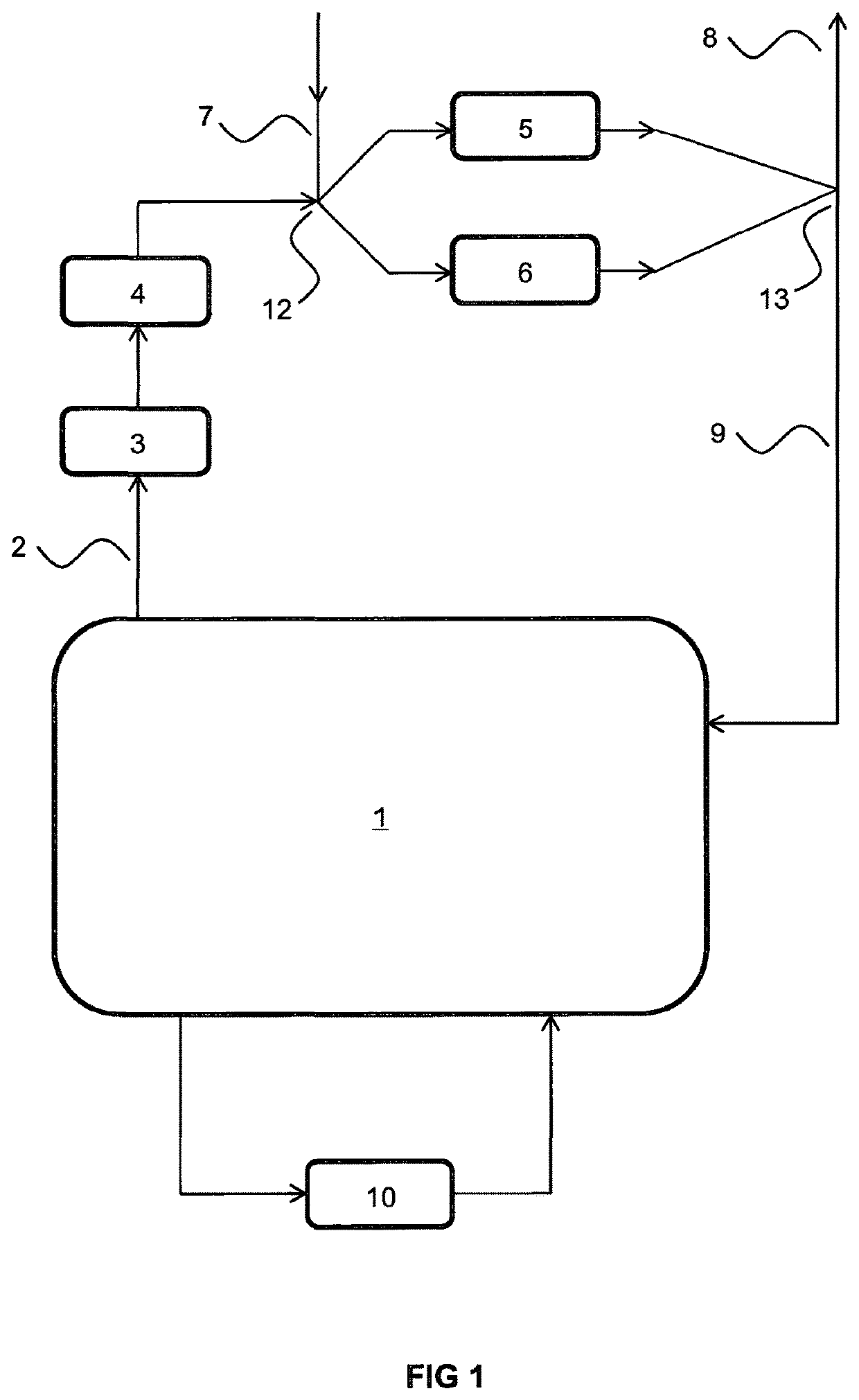System and process for carbon dioxide removal of air of passenger cabins of vehicles
a technology for passenger cabins and carbon dioxide removal, which is applied in the direction of combustible gas purification/modification, other chemical processes, separation processes, etc., can solve the problems of recirculation of hvac systems, health risks of airborne nanoparticles from vehicle emissions, etc., to improve fuel economy, improve ventilation systems, and reduce energy load
- Summary
- Abstract
- Description
- Claims
- Application Information
AI Technical Summary
Benefits of technology
Problems solved by technology
Method used
Image
Examples
Embodiment Construction
[0036]Preferred and / or optional features of the invention will now be set out. Any aspect of the invention may be combined with any other aspect of the invention unless the context demands otherwise. Any of the preferred and / or optional features of any aspect may be combined, either singly or in combination, with any aspect of the invention unless the context demands otherwise.
Carbon Dioxide Removal Assembly
[0037]Regenerable carbon dioxide sorbent material is employed in the methods of the present invention. A range of regenerable carbon dioxide sorbent materials are known. Typically, regenerable carbon dioxide sorbent materials are regenerated by heating them to promote desorption of the sorbed carbon dioxide and flowing a desorption gas over the material to carry away the desorbed carbon dioxide. Additionally, the sorbent material may be exposed to a pressure below atmospheric pressure to encourage desorption. This can result in a lowering of the temperature required to effect des...
PUM
| Property | Measurement | Unit |
|---|---|---|
| temperature | aaaaa | aaaaa |
| temperature | aaaaa | aaaaa |
| temperature | aaaaa | aaaaa |
Abstract
Description
Claims
Application Information
 Login to View More
Login to View More - R&D
- Intellectual Property
- Life Sciences
- Materials
- Tech Scout
- Unparalleled Data Quality
- Higher Quality Content
- 60% Fewer Hallucinations
Browse by: Latest US Patents, China's latest patents, Technical Efficacy Thesaurus, Application Domain, Technology Topic, Popular Technical Reports.
© 2025 PatSnap. All rights reserved.Legal|Privacy policy|Modern Slavery Act Transparency Statement|Sitemap|About US| Contact US: help@patsnap.com



